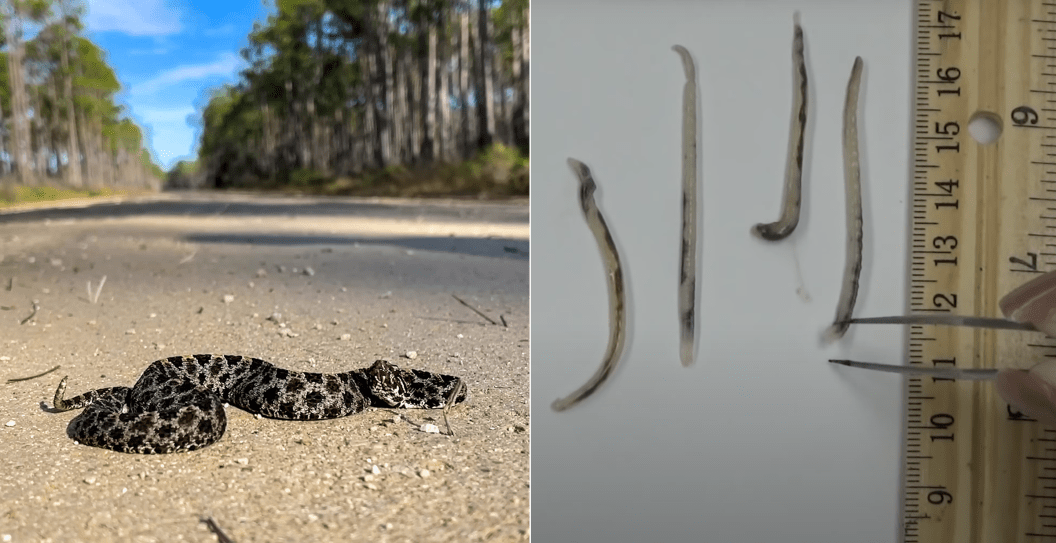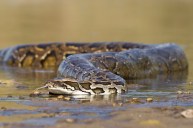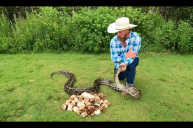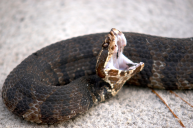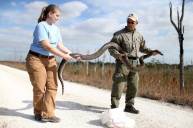There's a new type of parasitic crustacean that's begun to infect native Florida snake species and has the potential to move into other states, according to researchers.
"[Invasive lungworms] are potentially very nasty parasites," researcher Terence Farrell, a professor of biology at Florida's Stetson University, told The Wildlife Society. "They basically are like leeches."
Lungworms were detected in southern Florida as early as 2004. They've long been attacking the lungs of Burmese pythons, an invasive species of snake that's made a home in Florida.
But now, the lungworms are infecting native snakes in Florida, too.
Most of the cases so far have been in southern Florida, in the Everglades where Burmese pythons have established a breeding population. But last year, Terence Farrell, a professor of biology at Florida's Stetson University, published a study that found that the lung parasite has reached pygmy rattlesnakes in central Florida, specifically in the Lake Woodruff National Wildlife Refuge, hundreds of miles north of the Everglades.
The attack has to do with the strange life cycle of parasites, microscopic organisms that infect hosts and can spread from species to species. Once in a snake's lungs, lungworms start feeding on the snake's blood. They lay eggs inside the snake, which eventually pass through the snake's feces. Farrell's study suggests that other reptiles and amphibians, like lizards, toads, and frogs, can carry the parasites are intermediary hosts, before being eaten by a snake, restarting the cycle.
A 2017 study, also by Farrell, found lungworms in nine native snake species in Florida, including black racers, eastern indigo snakes, scarlet king snakes, ribbon snakes, and water snakes.
While Burmese pythons have evolved with the parasites in Asia, their native range, and don't seem adversely affected by the lungworms, native snakes aren't faring as well. The lungworms can grow up to three inches in length, causing serious issues for smaller snakes.
"We think that it's leading to snake mortality," Farrell says. "We've seen population decline and just a lot of sick and dead snakes, many of which are infected by parasites."
"We had a coachwhip snake that had 77 parasites clogging its lung," said Melissa Miller, a parasitologist and python parasite researcher at the University of Florida in Gainesville, in The News-Press. "The snake was trying to compete for resources and breath, and if you have 77 parasites in your lungs, that could be very difficult."
READ MORE: Florida Neighborhood Overrun by Dozens of Ball Pythons
